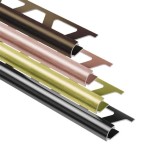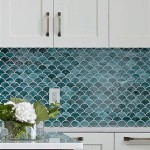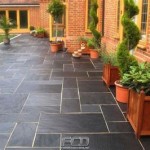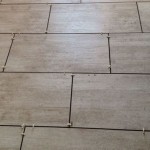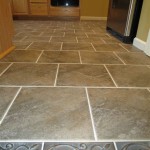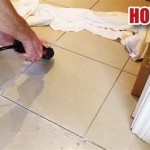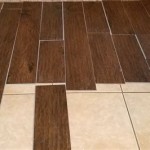What Is The Best Backer Board for Tile in a Shower Floor?
Selecting the appropriate backer board for a shower floor is a crucial step in ensuring a long-lasting and waterproof tiled shower. The backer board serves as the substrate to which the tile is adhered, and its performance directly impacts the integrity of the entire shower installation. Choosing the wrong material can lead to water damage, mold growth, and costly repairs. This article examines the different types of backer boards available, their advantages and disadvantages, and the factors to consider when determining the most suitable option for a shower floor.
A successful shower floor installation relies on a stable, waterproof, and durable foundation. The backer board must be able to withstand constant exposure to moisture, temperature fluctuations, and the weight of the tile and any applied loads. Furthermore, it needs to provide a suitable surface for the thin-set mortar to bond effectively, preventing tile cracking or detachment. Improper installation or the use of an inadequate backer board can compromise the water resistance of the shower enclosure, leading to significant structural problems down the line. Therefore, careful consideration should be given to understanding the properties of different backer board materials.
Understanding Common Backer Board Options
Several types of backer boards are commonly used in shower installations, each with unique characteristics that make them suitable for different situations. Cement board, gypsum board, and foam board are the most prevalent options, and understanding their properties is essential for making an informed decision.
Cement board is one of the most popular choices for shower floors due to its exceptional water resistance and durability. It is composed of Portland cement and reinforcing fibers, creating a rigid and stable substrate. Cement board is highly resistant to mold and mildew growth, making it a good choice for a wet environment like a shower. It offers good adhesion for thin-set mortar, creating a strong bond with the tile.
Gypsum board, also known as drywall or sheetrock, is generally not recommended for shower floors. While some manufacturers produce moisture-resistant versions of gypsum board, they are not as waterproof as cement or foam boards. Gypsum board can absorb moisture, which can lead to swelling, crumbling, and mold growth. Its lower density and weaker structure make it less suitable for supporting the weight and stress of a tiled shower floor. The risk of water damage with gypsum board is significantly higher than with other options.
Foam board offers a lightweight and waterproof alternative to cement board. It is typically made of extruded polystyrene (XPS) or expanded polystyrene (EPS) foam, coated with a cementitious layer for tile adhesion. Foam board is easy to cut and install, making it a popular choice for DIY projects. Its inherent waterproof properties eliminate the need for a separate waterproofing membrane in many cases, simplifying the installation process. However, foam board may not be as rigid as cement board, requiring additional support in some applications.
Key Considerations for Choosing a Backer Board for a Shower Floor
Selecting the best backer board for a shower floor involves evaluating several key factors, including water resistance, load-bearing capacity, ease of installation, and cost. Each of these aspects plays a role in determining the overall suitability of a backer board for a specific shower installation.
Water resistance is arguably the most critical factor to consider. The backer board must be able to withstand constant exposure to water without deteriorating or allowing moisture to penetrate the underlying structure. Cement board and foam board are inherently water-resistant, while gypsum board requires additional waterproofing measures. Choosing a backer board with superior water resistance minimizes the risk of water damage, mold growth, and costly repairs.
Load-bearing capacity refers to the backer board's ability to support the weight of the tile, mortar, and any applied loads. A shower floor must be able to withstand the weight of a person standing on it without deflecting or cracking. Cement board and reinforced foam board offer excellent load-bearing capacity, making them suitable for heavy tile installations. The subfloor's structural integrity also plays a vital role in supporting the overall load; therefore, a properly installed and sound subfloor is crucial, regardless of the backer board chosen.
Ease of installation can significantly impact the time and cost of a shower renovation. Foam board is generally easier to cut and install than cement board, requiring fewer specialized tools. Cement board, while more durable, can be heavier and more difficult to handle. Consideration should be given to the level of DIY experience and the availability of appropriate tools and equipment. Proper installation techniques are essential, regardless of the backer board material used. This includes using the correct fasteners, sealing seams with appropriate tape and thin-set mortar, and ensuring a level and stable substrate.
Comparing Cement Board and Foam Board for Shower Floors
While both cement board and foam board are viable options for shower floors, they have distinct advantages and disadvantages. A direct comparison of these two materials can help in making an informed decision based on the specific needs of the shower installation.
Cement board offers excellent durability and water resistance, making it a robust choice for shower floors. It provides a solid substrate for tile adhesion and can withstand heavy loads. However, cement board is heavier and more difficult to cut than foam board, requiring specialized tools like a cement board scoring knife or a wet saw. Installation can be more labor-intensive, particularly for larger showers. Cement board also usually requires a separate waterproofing membrane application over seams and screw holes to ensure complete water impermeability.
Foam board is lightweight, waterproof, and easy to install, making it an attractive option for DIYers. Its inherent waterproof properties often eliminate the need for a separate waterproofing membrane, simplifying the installation process and potentially saving time and money. However, foam board may not be as rigid as cement board and might require additional support, particularly in areas with high traffic or heavy loads. While easy to cut, using the correct cutting tools is important to ensure clean edges and prevent damage to the foam core. Some types of foam board may also be more susceptible to damage from sharp objects during installation, requiring careful handling.
Ultimately, the choice between cement board and foam board depends on the specific requirements of the shower installation, the level of DIY experience, and budget considerations. If durability and load-bearing capacity are paramount, cement board may be the preferred choice. If ease of installation and waterproofing are prioritized, foam board can be a suitable alternative. It is always recommended to consult with a professional tile installer or contractor to determine the best option for a particular project. They can assess the specific site conditions, evaluate the subfloor, and provide expert advice based on their experience and knowledge of local building codes.
In addition to the backer board itself, other factors contribute to a successful and waterproof shower floor installation. These include the proper preparation of the subfloor, the use of high-quality thin-set mortar, the application of a reliable waterproofing membrane (if required), and the correct grouting and sealing of the tile joints. Neglecting any of these steps can compromise the integrity of the shower enclosure and lead to water damage.
The subfloor must be structurally sound, level, and clean before installing the backer board. Any deficiencies, such as loose boards or uneven surfaces, should be addressed before proceeding. The backer board should be securely fastened to the subfloor using appropriate screws or nails, spaced according to the manufacturer's instructions. Seams between boards should be taped and sealed with thin-set mortar to create a continuous, waterproof surface.
The type of thin-set mortar used should be specifically designed for use with the chosen backer board and tile. Modified thin-set mortars offer better adhesion and flexibility, reducing the risk of tile cracking. The mortar should be mixed according to the manufacturer's instructions and applied evenly to the backer board using the appropriate trowel size. The tile should be firmly pressed into the mortar, ensuring full coverage and proper alignment.
If a waterproofing membrane is required, it should be applied according to the manufacturer's instructions. Liquid-applied membranes are a popular choice, providing a seamless and flexible barrier against water penetration. The membrane should be applied to all surfaces of the shower floor, including the seams between the backer boards and the transition to the shower walls. Allow the membrane to dry completely before installing the tile.
Finally, the tile joints should be properly grouted and sealed to prevent water from penetrating the shower floor. Use a high-quality grout that is specifically designed for wet environments and apply it according to the manufacturer's instructions. Once the grout has cured, seal it with a penetrating sealer to protect it from staining and water damage. Reapply the sealer periodically to maintain its effectiveness.

The Pros And Cons Of Various Tile Backers Family Handyman

Tile Backerboard Material Options Fine Homebuilding

The Pros And Cons Of Various Tile Backers Family Handyman

Diy Guide To Choosing And Installing Shower Tile Backer Board

Densshield Tile Backer Board Moisture Barrier Underlayment

What Is The Best Backer Board For A Shower

Diy Guide To Choosing And Installing Shower Tile Backer Board

Choosing Installing A Tile Backer Board Checkatrade

How To Install Cement Board For Tile Projects Diy Family Handyman

Choosing Installing A Tile Backer Board Checkatrade
Related Posts

